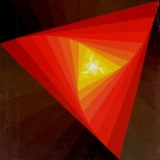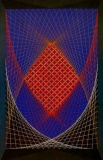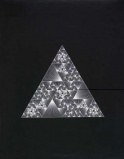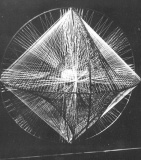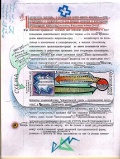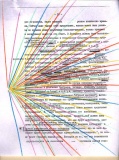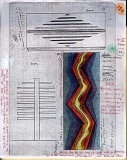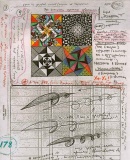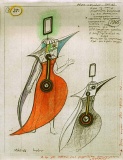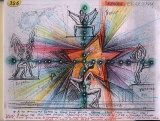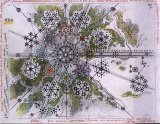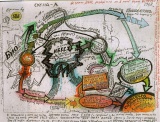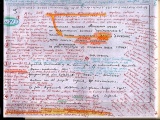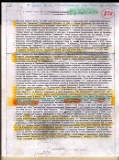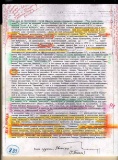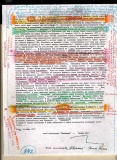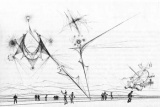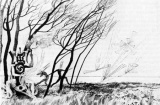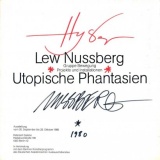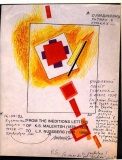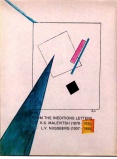Lev Nusberg
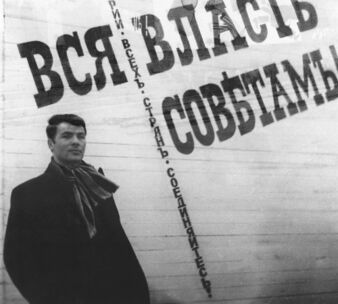 Nusberg in November 1967. Photo: Alexander Grigorjev. | |
| Born |
June 1, 1937 Tashkent, Uzbekistan, Soviet Union |
|---|---|

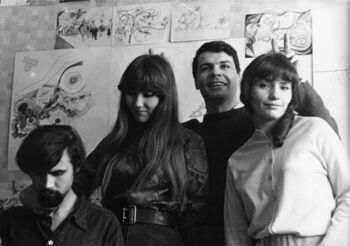
Lev Valdemarovich Nusberg [Лев Вальдемарович Нусберг (Нуссберг)] (1937, Tashkent) is a painter and kinetic artist.
His father Waldemar came from a German family of Nusberg gardeners, subsequently lost aristocratic prefix "von" and the letter "s" from his surname, became an architect, and in 1938 he was convicted for "spying for a foreign power" and disappeared in gulag in Ural. In the late 1940s, Lev with his mother, a singer and a technologist Raisa Bespalova, failed to emigrate to Poland and moved to Leningrad. Nusberg graduated from the Moscow Art School 1905 (MSKhSh, 1951-58). The eye-opening event for him was the Picasso exhibition in Moscow (1956).
"I want to work with electromagnetic fields, with pulsating plasma blobs in space, with the movement of gases and liquids, with glass and all kinds of optical effects, with the change of temperature and different smells and, of course, with the music." (Nusberg)
He formed the Dvizheniye group (1962-78) whose members included Francisco Infante and Viacheslav Koleichuk among others. The aim of the group was to create 'bio-centric' systems called Igrovye Bioniko-Kineticheskie Sistemy [playful bionic-kinetic systems]. A charismatic leader, Nusberg attracted people, but some members of the group (particularly Infante) found his management style 'totalitarian'. He also founded the group Dynamik in Leningrad.
Nusberg emigrated to Germany in 1976. He held a number of exhibitions, in Dusseldorf and Paris (1976), Venice, Netherlands and London (1977), Bochum, Turin, Kassel, New York (1978), and in Bochum (1979). In 1980 he moved to the United States where he lives in Orange, Connecticut, afterwards. He moved from kinetic art to surrealist painting, and keeps rewriting the history of the movement.
Works[edit]
Notebooks[edit]
Trivia[edit]
Publications[edit]
- "Program skupiny Dviženije" [1964], in Dušan Konečný, Hledání tvaru: moskevské a leningradské ateliéry, Prague: Svět sovětů, 1968, pp 21-22. (Czech)
- Manifest russkikh kinetov [Манифест русских кинетов], Moscow, 1966. (Russian)
- "Manifest skupiny Dviženije", Výtvarné umění 17, 1967, p 465. (Czech)
- "Cybertheater", Leonardo, 1969, pp. 61-62. (English)
- "Das 'Kiber' Theater", Das Kunstwerk / Schriftl. Leopold Zahn. 23, 1969, pp 44-45. (German)
- "Kybernetické divadlo", Acta scaenographica 10:2, 1969/70. (Czech)
- with G. Goloweiko, Concept2" (serious joke): From the Ineditions Letters of K.S. Malevitsch (1878-1935) to L.V. Nussberg (1937-1998), New York, 1981. (English)
- Negativnye syuzhety: k voprosu ob istorii moskovskoy gruppy "Dvizhenie" [Негативные сюжеты: к вопросу об истории московской группы "Движение"], ed. Francisco Infante, Moscow: samizdat, 2002, 112 pp; 2nd ed., 2006, 192 pp. [1] [2] [3] (Russian)
- Collected writings by and on Nusberg, Part 1, Part 2, Part 3, Part 4, Part 5. (Russian)
- more
Catalogues[edit]
- Progressive Russische Kunst. Der Abbruch bis 1930: Lev Nusberg und die Moskauer Gruppe "Bewegung", Cologne: Galerie Gmurzynska, 1973, 161 pp. Catalogue, with texts by Szymon Bojko and Michel Ragon. Exh. held 29 Mar-31 May 1973. [4] (German)
- Lew Nussberg, Michel Ragon, Petr Spiegelmann, Lew Nussberg und die Gruppe Bewegung Moskau 1962-1977, Bochum: Museum Bochum, 1978, 206 pp. Exh. held 25 Feb-2 Apr 1978. (German)
- Lew Nussberg: utopische Phantasien: Gruppe Bewegung, Projekte und Installationen, eds. Helga Retzer and Jes Petersen, Berlin: Berliner Künstlerprogramm des DAAD, 1980, [1] leaf. Exh. held 20 Sep-25 Oct 1980. (German)
Literature[edit]
- Валентин Воробьев, "Кинетические игры футуролога Нуссберга", May 1999. Biographical sketch. Russian.
- "Nussberg", in The Blue Lagoon Anthology of Modern Russian Poetry, eds. Konstantin K. Kuzminsky and Grigory L. Kovalev, in 5(9) vol., ORP, 1980-86, vol. 2A, pp 113-221. Part 1, Part 2, Part 3, Part 4, Part 5. (Russian)
- Matteo Bertelé, "Lev Nusberg to Harald Szeemann, 1970–76: Notes on Convergent Ambitions and Shared Practices", Getty Research Journal 12, 2020, pp 241-255. [5] (English)
